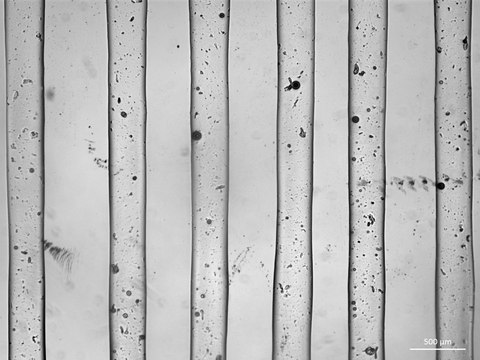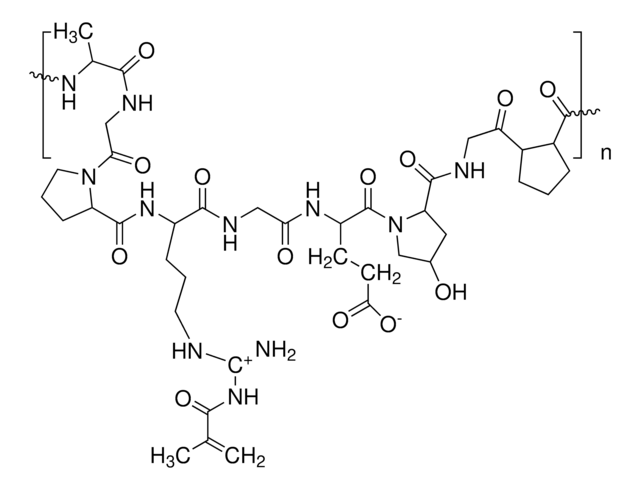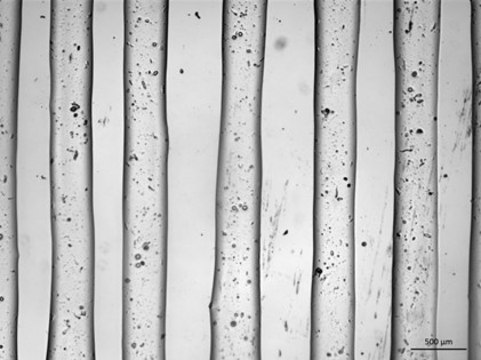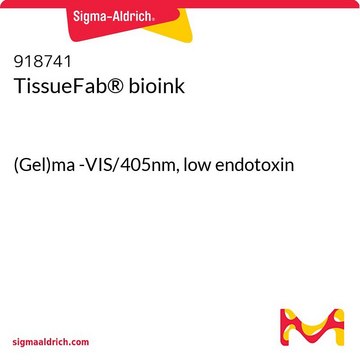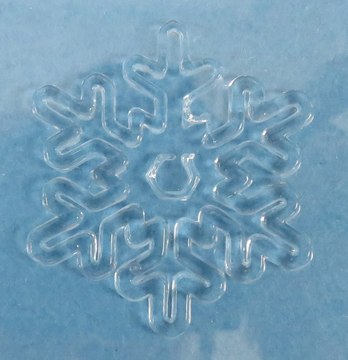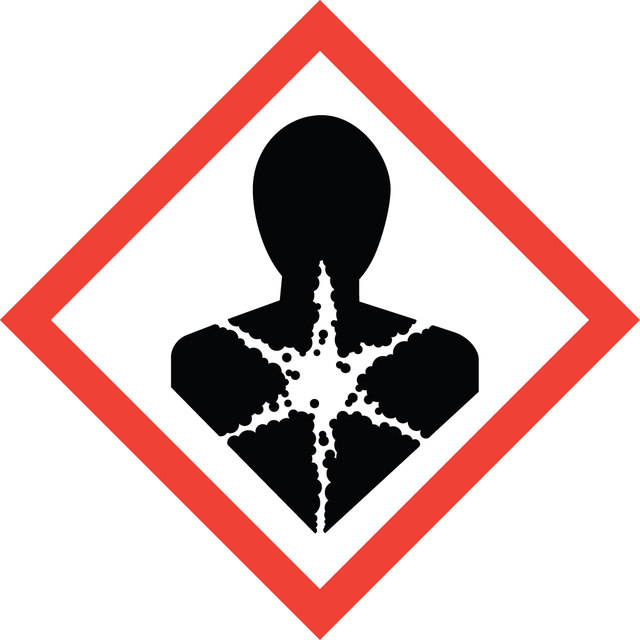906891
TissueFab® - GelMA-Vis
0.2 μm sterile filtered, suitable for 3D bioprinting applications
Synonym(s):
Bioink, Gelatin methacrylamide, Gelatin methacrylate, Gelatin methacryloyl
Select a Size
Select a Size
About This Item
Recommended Products
description
Packaging size: 10ml
form
viscous liquid
impurities
<5 cfu/mL Bioburden
color
colorless to pale pink
pH
6.5-7.5
application(s)
3D bioprinting
storage temp.
2-8°C
General description
Application
Packaging
Legal Information
Signal Word
Warning
Hazard Statements
Precautionary Statements
Hazard Classifications
Skin Sens. 1 - STOT RE 2
Target Organs
Liver,Upper respiratory tract
Storage Class Code
10 - Combustible liquids
WGK
WGK 3
Flash Point(F)
Not applicable
Flash Point(C)
Not applicable
Regulatory Information
Choose from one of the most recent versions:
Certificates of Analysis (COA)
It looks like we've run into a problem, but you can still download Certificates of Analysis from our Documents section.
If you need assistance, please contact Customer Support.
Already Own This Product?
Find documentation for the products that you have recently purchased in the Document Library.
Articles
Professor Shrike Zhang (Harvard Medical School, USA) discusses advances in 3D-bioprinted tissue models for in vitro drug testing, reviews bioink selections, and provides application examples of 3D bioprinting in tissue model biofabrication.
Protocols
Frequently asked questions (FAQs) for KAPA SYBR® FAST One-Step qRT-PCR Kits.
Our team of scientists has experience in all areas of research including Life Science, Material Science, Chemical Synthesis, Chromatography, Analytical and many others.
Contact Technical Service